Giving Thanks: Jenna Elfman Donates Breastmilk to Save Sick Baby, Beats Breastfeeding Booby Traps™
Actress Jenna Elfman shares her challenging breastfeeding experience, how she overcame obstacles, and how her pumped breastmilk helped save the life of a baby that was born drug-addicted. Jenna Elfman won a Golden Globe for her role in the hit TV series Dharma & Greg, starred in the movie Keeping the Faith and just wrapped filming Friends with Benefits, set to hit movie theaters July 2011. Jenna is married to Bodhi Elfman. They have two children, Story and Easton. We’re naming Jenna a Best for Babes Champion for Moms and she also works closely with the non-profit Healthy Child Healthy World. Don’t forget to read our breastfeeding resources at the end of the interview!
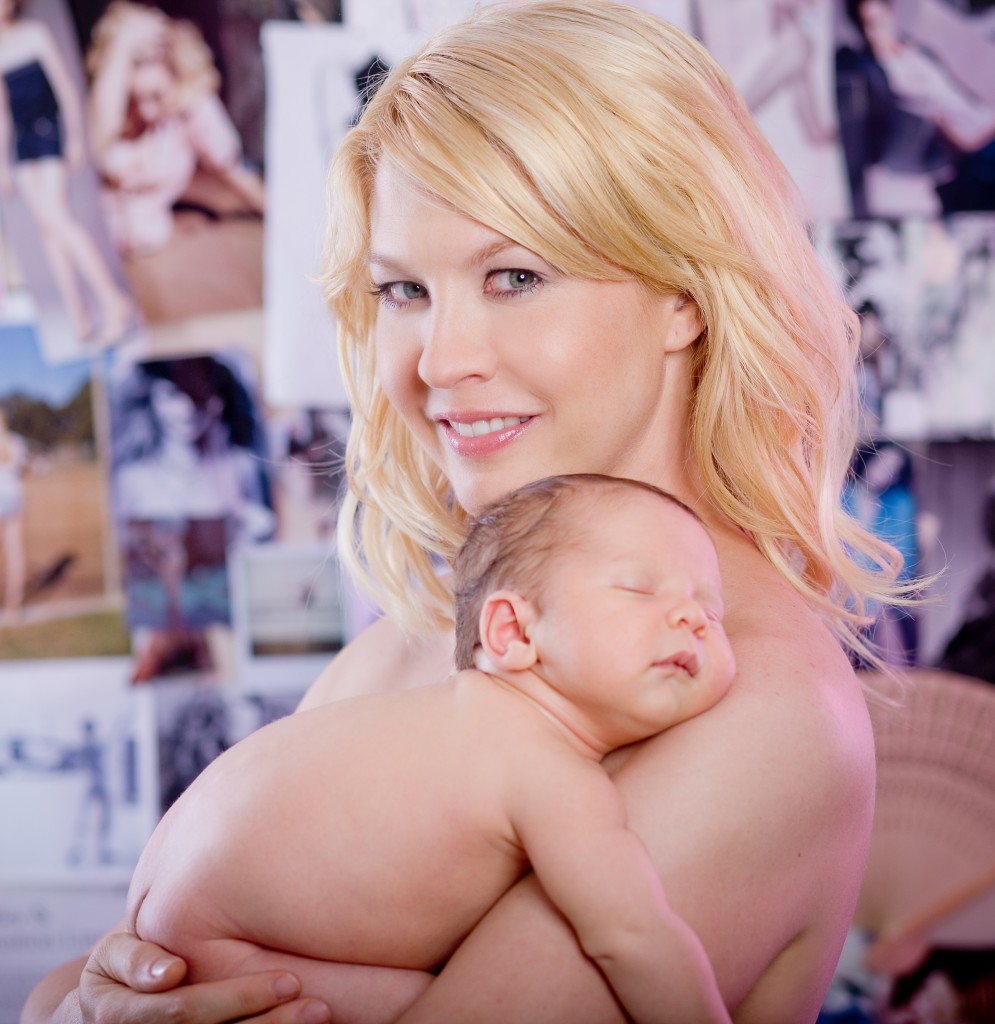
BfB: Jenna, thank you so much for talking to us about your breastfeeding experience!
Jenna: I love what you guys are doing, I think it’s awesome! If I had only known when I had my first . . . I definitely experienced a lot of challenges. As a result, I’m on a mission with every pregnant woman I see! I’ll ask, “So are you planning to breastfeed? Have you prepared?” If anyone had told me what to expect[1], or had given me some pointers, I would have been able to have a very different experience.
BfB: Is it fair to say you were “Booby Trapped” by the barriers to breastfeeding?
Jenna: Yes! I had zero education about breastfeeding before giving birth to my first son, I didn’t know there was anything TO learn about breastfeeding! I thought you put the baby on the breast and they sucked and that was it. There was maybe one sentence on it in my birth class. So . . . when I finally put him on the breast; I didn’t know about latch, I didn’t know about anything! I was not prepared, and didn’t know that you’re very tired, that you have to feed your baby often so you’re awake a lot, that you’re focusing all your attention on this brand new prize, and that your hormones go through a whole shift. You potentially have no education about how to breastfeed, yet you still have the duty of feeding your child, and keeping the child alive. My milk came in the day I came home from the hospital, and I still didn’t know how to latch. My baby wasn’t getting enough milk, and the hospital told me that I needed to feed him every 3 to 4 hours, but that’s based on what a formula-fed baby needs[2]! Story was hungry and losing more weight than he should, so I had to switch to formula for a couple of days. The nurses kept telling me to latch the baby “up and over”, and I couldn’t understand what they meant. I ended up having him latched with his bottom jaw on the nipple . . . later I found out the bottom jaw is the “working jaw” and my latch was all wrong. My nipples were really injured from not having a proper latch[3], it hurt really bad. I had a kid that was losing weight, and it was WAY stressful, and I was so engorged, making it even harder to latch him on.
BfB: Because you were creating more demand by putting your baby on all the time, but because of his bad latch, he wasn’t getting it.
Jenna: Exactly. It was definitely not boring. So I ended up just pumping so I could heal, and he was drinking pumped milk out of bottles. By the time I healed enough to put him back on, he was like “I’m over this” and stayed on bottles[4]. So he got exclusively breast milk out of bottles, and I ended up pumping for ten and a half months.
BfB: Wow, so you were an “EPer”! That’s short for “exclusively pumping” -there is a whole support group for women who end up exclusively pumping[5], and most of them were booby-trapped like you were.
Jenna: I pumped in the backs of cars, on the way to the set, on the freeway, shopping and then going to back to the car. I was walking around New York City, and I went to FAO Schwarz and said “Hey, I know you’re closing, but I need to feed my baby, can I pump in the bathroom? Of course they said yes, when you say “I need to feed my child” sometimes that opens doors.
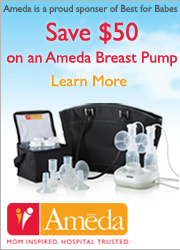 But here’s an amazing thing that came out of all that pumping. Of course you know, as your baby feeds, your body calibrates because it’s supply and demand. Because I was pumping, and always pumping to drain the breast, I was making ridiculous amounts of milk. I was freezing, freezing, freezing, freezing, freezing, freezing tons of milk more than he was using. I had no more room in my freezer, every time I opened the door, it was falling out. I had a friend, who had a family member who gave birth to a methamphetamine-addicted baby. They didn’t know the sister was on these drugs, and the baby was born detoxing from methamphetamine, which is one of the most horrific ways to start this lifetime, detoxing from drugs you had nothing to do with. This poor baby couldn’t keep anything down, no formula was working. My friend was over at my house and we were in the kitchen, and my husband opens the freezer and says, “Hey . . . what about THAT?” And I said, “Oh my God, you can have it all,” because I wasn’t using it. So my friend and his wife took the baby in because the mother took off, it was a bad situation, and once a week my friend would come over and get a supply of breastmilk[6]. The second the baby started on breastmilk, he could hold it down, he could take it, all of his rash symptoms on his body started going away. I literally kept him alive for several months on my breastmilk. He was thriving, he was gaining weight, and going through the withdrawal symptoms much better . . . my friends ended up officially adopting him, and I saw him at a birthday party the other day, he is now 3 and doing great.
But here’s an amazing thing that came out of all that pumping. Of course you know, as your baby feeds, your body calibrates because it’s supply and demand. Because I was pumping, and always pumping to drain the breast, I was making ridiculous amounts of milk. I was freezing, freezing, freezing, freezing, freezing, freezing tons of milk more than he was using. I had no more room in my freezer, every time I opened the door, it was falling out. I had a friend, who had a family member who gave birth to a methamphetamine-addicted baby. They didn’t know the sister was on these drugs, and the baby was born detoxing from methamphetamine, which is one of the most horrific ways to start this lifetime, detoxing from drugs you had nothing to do with. This poor baby couldn’t keep anything down, no formula was working. My friend was over at my house and we were in the kitchen, and my husband opens the freezer and says, “Hey . . . what about THAT?” And I said, “Oh my God, you can have it all,” because I wasn’t using it. So my friend and his wife took the baby in because the mother took off, it was a bad situation, and once a week my friend would come over and get a supply of breastmilk[6]. The second the baby started on breastmilk, he could hold it down, he could take it, all of his rash symptoms on his body started going away. I literally kept him alive for several months on my breastmilk. He was thriving, he was gaining weight, and going through the withdrawal symptoms much better . . . my friends ended up officially adopting him, and I saw him at a birthday party the other day, he is now 3 and doing great.
BfB: How amazing is that! It’s like donating an organ.
Jenna: It was so rewarding. To this day when I see him, in my heart I feel connected to him, like he’s my little angel friend.
I had so wanted to breastfeed, and it was such a loss for me that I didn’t pull it off. I wanted to be one of those mothers who are hanging out, talking with their girlfriends, lifting up their shirt, feeding their kid . . . I wanted to be that person, who could just whip out their boob and feed their kid! That just did not happen. I probably could have gotten Story back on the breast, if I had had baby-led breastfeeding information, which I did not have until this time around.
BfB: You said you saw lactation consultants, and none of them could help you get the baby back on the breast?
Jenna: I was out of town filming, so I didn’t have a lactation consultant nearby, and truthfully I didn’t even know to ask a lactation consultant about getting Story back on the breast, I just assumed it wasn’t going to work out. I was bummed because all my peers were breastfeeding and I was excusing myself to go pump. So I was determined with my second, with Easton, to do it differently.
BfB: What did you do differently with breastfeeding your second child, Easton, now 8 months?
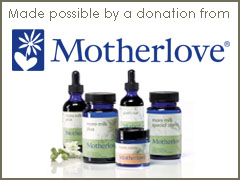 Jenna: With Easton, I got educated. The one book that saved my life was “Breastfeeding Made Simple” — the most phenomenal breastfeeding book ever. I had major epiphanies of what had gone wrong with Story and how all of it could have been prevented and I could have successfully breastfed him for as long as I wanted. With Easton, from the first moment I put him on the breast I made sure he had a good latch! I was not going to let his first orientation to my breast be with an incorrect latch and become a bad habit. So every time l made sure that he latched properly. Another amazing thing for the sore nipples, which a nurse in the hospital told me, is to excrete a little breastmilk and spread it around on the nipple, and then put the nipple cream on after each feeding. I did that every time, and I had sore nipples for maybe three days. Between getting the proper latch every time ( and never compromising on it), and taking proper care with the cream, it was fantastic. I was so glad I finally got to breastfeed!
Jenna: With Easton, I got educated. The one book that saved my life was “Breastfeeding Made Simple” — the most phenomenal breastfeeding book ever. I had major epiphanies of what had gone wrong with Story and how all of it could have been prevented and I could have successfully breastfed him for as long as I wanted. With Easton, from the first moment I put him on the breast I made sure he had a good latch! I was not going to let his first orientation to my breast be with an incorrect latch and become a bad habit. So every time l made sure that he latched properly. Another amazing thing for the sore nipples, which a nurse in the hospital told me, is to excrete a little breastmilk and spread it around on the nipple, and then put the nipple cream on after each feeding. I did that every time, and I had sore nipples for maybe three days. Between getting the proper latch every time ( and never compromising on it), and taking proper care with the cream, it was fantastic. I was so glad I finally got to breastfeed!
We thought this was a beautiful story-perfect to celebrate Thanksgiving-and kudos to Jenna for Beating the Breastfeeding Booby Traps™! Did you experience Booby Traps like hers?
Stay tuned for Part II of our Interview with Actress Jenna Elfman, coming soon!
[1] For information on how to prepare for breastfeeding, see Jenna’s Top 3 Breastfeeding Tips box and our Help for Expecting Moms section.
[2] Best for Babes believes that mothers should not be discharged from the hospital until they have mastered the ability to establish a successful latch with confidence and without assistance. As for scheduling, breastfed babies and their mothers do best when feeding “on cue” not by the clock. When baby shows early signs of hunger (crying is a late indication) they will latch best, milk supply will normalize, and moms & babies do better! For more information, see Get Your Best Game On, Girlfriend
[3] Excellent information on preventing nipple pain, getting a good latch, and treating problems: Dr. Jack Newman’s website has a wealth of information, including detailed information on nipple management. See . Also see Motherlove.com .
[4] With the proper help, it is often, though not always, possible to transition babies back to the breast. An excellent International Board Certified Lactation Consultant or recommended lactation specialist can help you, to find one in your zip code area, see www.ilca.org, or ask a La Leche League Leader, Childbirth Educator, or doula for a recommendation.
[5] For more information on pumping and expressing breastmilk, see Kellymom.com’s extensive pumping guide and Ameda.com’s excellent pumping tips, http://www.ameda.com/breast-pumping/breast-pumping-tips. Support groups for exclusively pumping moms include www.exclusivelypumping.com and Facebook group: Exclusively Pumping & Expressing. Let us know if you have others!
[6] Human milk is the next best substitute to breastfeeding or the mother’s own milk, and is far superior to infant formula. Donated breast milk is as safe as donated human blood when screened and pasteurized through a Human Milk Banking Association of North America milk bank. Anyone who is considering informal human milk sharing through friends, family members, or groups like www.milkshare.com and www.eatsonfeets.com is encouraged make an informed decision and educate themselves about potential risks. See this recent Time.com article for more on Eats on Feets.







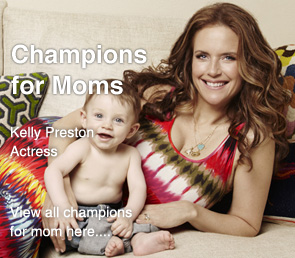
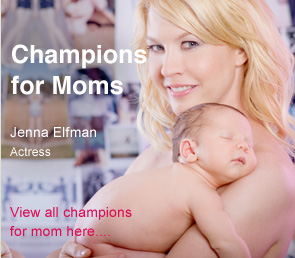
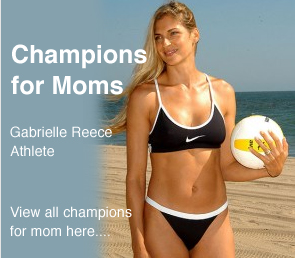
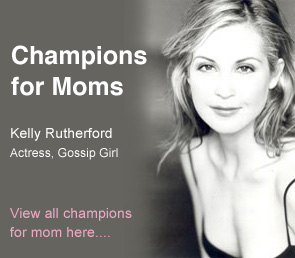
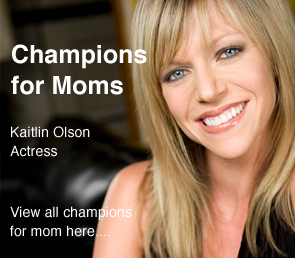
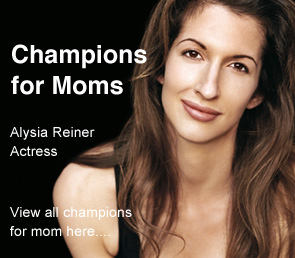
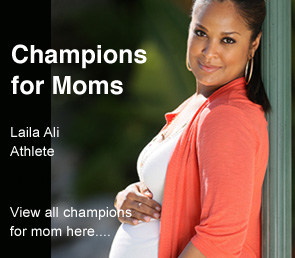
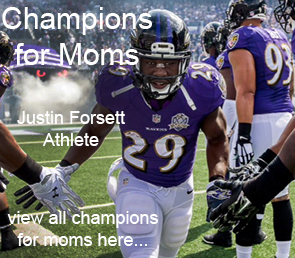
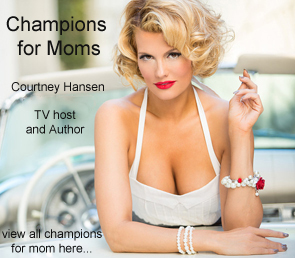
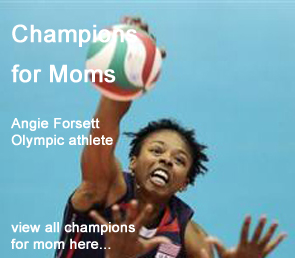
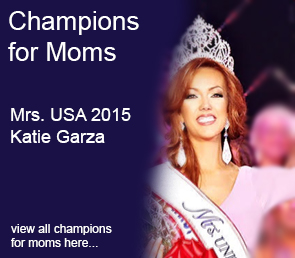
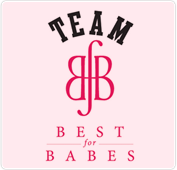
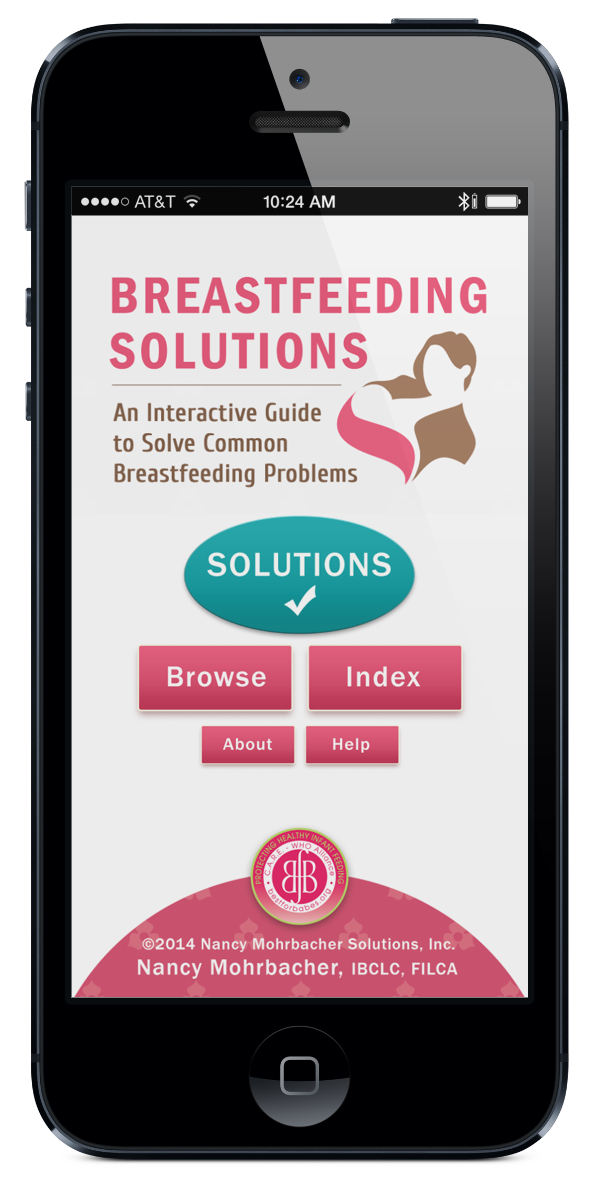
Jenna is such an amazing and inspiring woman! Thank you for sharing this awesome interview!
I love that she donated milk!! Donation (or using donated milk) is such a controversy right now.. but when the *stars* start doing things they seem to be *ok* for us normal folks to do LOL. Anyone know how long she is planning to nurse this child? So called *extended* (by US standards) would be awesome and help open yet another door!
Donation (or using donated milk) is such a controversy right now.. but when the *stars* start doing things they seem to be *ok* for us normal folks to do LOL. Anyone know how long she is planning to nurse this child? So called *extended* (by US standards) would be awesome and help open yet another door!  I am a little hmm how to put it… frustrated… that she is a “Best for Babes Champion for Moms” when SO many moms do this exact thing and get little to no recognition. But because she is *a star* doing it she gets recognized and gets a title. I would love to see more *everyday* moms interviewed and recognized
I am a little hmm how to put it… frustrated… that she is a “Best for Babes Champion for Moms” when SO many moms do this exact thing and get little to no recognition. But because she is *a star* doing it she gets recognized and gets a title. I would love to see more *everyday* moms interviewed and recognized 
Holly, there are lots and lot of interviews with every day moms all over the web . . . but they do not get as much visibility, no matter how hard we try. By interviewing celebrities, we are taking advantage of their star power to reach millions of moms, educating, inspiring and empowering the masses with valuable information. We are also enrolling them to help us shine a spotlight on the barriers . . . hopefully one day we will have a breastfeeding celebrity testify in front of Congress about the urgency for paid maternity leave! Breastfeeding needs a Bono that champions this cause.
I second the Breastfeeding Bono. (Okay. That sounded weird. But you know what I mean.) At some point, our government MUST understand that our current maternity “leaves” are barbaric. I’ll support any celebrity who takes up the role of advocate to help our country’s women recieve the same leave options that every other industrialized nation in the world allows. This ridiculous practice of mothers returning to work before their bodies are even completely healed and potentially halting a breastfeeding relationship needs to stop. For a country that touts “family values” at every turn, we sure don’t put much value into our families.
Sorry. I’m getting on my soap box here. And totally off topic.
It’s not off topic. We agree. And while they’re at it, they need to stand up and say that the majority of our hospitals/maternity centers scoring a “D” on breastfeeding support is UNACCEPTABLE.
I just wanted to say thank you to Jenna! You are amazing and awesome! I can only hope that more people in the “spotlight” can normalize breast feeding again! *Swoons* You’re my heeeeeeeero!
Way to go Jenna!
I breastfed all of my sons, now 14, 11, and 6 and I LOVED it. It was my favorite part of their infancy. It was our special time together, our bonding time. I too was uninformed and uneducated when I had my first son so when my mother passed away three months after my son was born it didn’t occur to me that if I didn’t pump while I was away, my breasts would stop producing milk. I, same as Jenna, didn’t realize with my first son how educated you really should be and how much easier being educated helps the process. I thought at first, put the breast in his mouth and we’re done. I never knew there were issues, pain, and infections, and how much you use is how much you’ll produce. So needless to say, when I returned to NY from Florida after my sister and I were done taking care of what we needed to finalize after my mother passed away, I was INCREDIBLY disappointed to learn that I could no longer breast feed and I didn’t have anyone there telling me or teaching me if it were possible to begin feeding him again and have my breasts increase their milk production, because after a week of not pumping, my breasts hardly made any milk. I was SO disappointed… needless to say I did not make those same mistakes with my other two sons and was able to breastfeed them for as long as I wanted to.
Great interview, expresses so well what moms I know say about what they wish they had known the first time around… would like to also suggest these two links: http://www.biologicalnurturing.com/ and http://www.nancymohrbacher.com/
Love the work you are doing!
Thank you for publishing this! Formula companies have done such a thoroughly excellent job of advertising canned formula that a lot of people do not understand that the only normal and healthy way to feed a baby is with human breast milk! I loved reading this informative interview.
Thank you.
I have always been a HUGE fan of Jenna’s, so to see this just solidifies my views of her! I had similar struggles with my first, even had the doctor pushing formula (I finally wised up about this lousy doctor about 6 months after my daughter was born - he was lousy the entire pregnancy and downright rude, but I was too naive to know any better and ended up with a 100% unnecessary c-section because of him as well).
I got educated and nursed my 2nd baby 15 months (dried up during a subsequent pregnancy that ended in miscarriage) and he got pumped milk until 18 months. I nursed my 3rd baby 17 months, total baby-led weaning and he never would take a bottle. Now with my 3rd I again am shooting for 2 years of nursing.
With my 2nd, I had to pump to maintain my supply (he had hypotonia and while he GOT milk, his nursing didn’t stimulate my supply) and ended up with expired milk I had to toss. With my 3rd I had already pumped a decent stash when we realized he wasn’t going to take a bottle, and again it ended up getting tossed when it expired. Now with my 4th I am aware of organizations such as milkshare and eatsonfeets and have signed up to pump extra for both! I know from experience that my body can make a LOT of milk if I ask it to… I would get 16+ oz during one of my pumping sessions with my 2nd!
Having celebrities speak out about these things gets the word out faster about organizations such as these, and if I had known, I could have donated hundreds or even THOUSANDS of ounces of milk with my 2nd and 3rd babies. SO glad I know about it now.
Don’t forget about HM4HB (Human Milk for Human Babies)!!! They have a Facebook page and other pages for different states!!
Thank you Jenna - what an AWESOME story! I love you even more now.
Yet another reason to love Jenna Elfman! I always have and this just makes me love her even more! Awesome article 😀
I’ve loved Jenna ever since Dharma and Greg and now I love her even more. It made me so happy to read this story. I am very proud of breast feeding my 5 kiddos (one still nursing) and I am so proud of Jenna! Way to go hot mama!
I’m sitting here in tears. I never thought I’d hear another mother with a breastfeeding story so similar to mine. I, too, thought, I have a boob, he has a mouth, bada bing breastfeeding! Visions of me in a flowy dress nursing my son while birds sang and dandalions floated in the air were replaced by alarm clocks and the sound of the pump. I EP’d for ten months. I pumped in a car, at the drive in, in the Nordstrom’s mother’s lounge, at the beach, at every friend’s house, pretty much anywhere I went, I had my pump at my side.
With my daughter, I educated myself and learned everything I could about breastfeeding. When she was placed in my arms, she latched on like a champ and is still going strong 16 months later.
Thank you for this interview. It makes me admire Jenna that much more.
My new favorite celebrity! I love that she is so honest, open and nonjudgemental. I can’t believe she helped save another baby too!
This is great! Since America is unfortunately so obsessed with celebs, I wish more would speak out about breastfeeding. It’s really sad how humans are so ignorant when it comes to such a basic human need….feeding our young. Our society is so sad when it comes to this. People think feeding babies crap in a can is the way to go and just as good as breastmilk, doesn’t help either when doctors/nurses are so uninformed about the topic too. :/ Good job Jenna!
A lot of moms would much rather breastfeed but have been boobytrapped. Many moms have been misled by formula advertising and by ill-educated healthcare professionals that formula is “just as good” as breastmilk. For some moms, using formula is unavoidable because they have had mastectomies, experienced sexual abuse (although breastfeeding can be healing and empowering in those situations too) or are taking medications that are not compatible with breastfeeding, and donor milk is not accessible or affordable. I worry that calling infant formula “crap in a can” is only going to put those who have been boobytrapped but don’t know it on the defensive. What would be great is if doctors etc. called it artificial baby milk, which is the preferred scientific name.
La Leche League helps with so much - not just signposting to an IBCLC! Mothers can go to meetings while pregnant, meet other mothers, see babies feeding, find out top information, browse books and leaflets…. The Womanly Art of Breastfeeding is another fab book, check out http://www.llli.org!
I agree. The new 8th edition of The Womanly Art of Breastfeeding that came out this summer is awesome! It answers so many questions from pregnancy to toddlerhood. I loved it so much I’m giving it as my standard baby shower gift now. And I love La Leche League. It has helped me so much to overcome issues that have some up with all 3 of my kids (whom were all breastfed for over a year). Sometimes it’s great to see other moms at meetings too and and just feel like you are not alone in whatever struggle or happiness you are having at that time.
Not everyone (particularly moms of color) is comfortable going to La Leche League. For many women, LLL seems too militant, particularly if you work out of the home. I am glad that you found the organization to be wonderful and helpful, but it’s not the right fit for everyone.
This makes me sad I’m a member of LLL and I don’t know why so many people seem to perceive us as “militant.” I’m white, but I do work outside the home.
I’m a member of LLL and I don’t know why so many people seem to perceive us as “militant.” I’m white, but I do work outside the home.
I got A LOT of good information online (much of it I wish I’d had earlier), but sometimes there’s no substitute for (free!) in-person help / a shoulder to cry on.
This also makes me sad. I feel so lucky to have an inclusive, supportive of all chapter of La Leche League to attend. And I agree that the FREE help and advice is priceless. Another group mothers can try is Breastfeeding USA, which is currently establishing nationwide chapters.
Now I think Jenna is even more fabulous! I love positive breastfeeding stories.
Such an amazing story. I had a similar situation after the birth of my 2nd child. My very best friend and I were pregnant at the same time and delivered within 3 weeks of one another. At 4 months of age her son became ill with RSV. He was on a nebulizor, as well as everything possible to keep his little lungs open to breath. Although my friend had done her best to breastfeed, she was unable for many of the same reasons mentioned in this article. It was her 1st child and she struggled to get him to latch on properly, and just couldn’t seem to get him to. Often, I would go over and help her out, give her a break so she could get some rest. Obviously her infant being as sick as he was, was unable to sleep himself, which inturn made it nearly impossible for her to sleep. Needless to say she extremely worried about the RSV and the fact that her child didn’t seem to be getting any better.
During that visit she mentioned how the formula he was on was causing more phlem, which made him cough more causing his bronchial tubes to become sore and inflamed. I had breastfed my 1st child (luckily) with no problem, and was now breastfeeding my second. I offered to pump milk for her so son, in hopes that it would remove the issue with the cough and phlem as well as boost his immune system. She agreed, and I began pumping and freezing for her as often as I could. Although many in our families thought it was “weird” to feed your child someone else’s breast milk, they could not deny the outcome. Almost immediately there was a difference in her childs breathing and overall health. We are both convinced it would have taken him much longer to recover from the virus had he not had breast milk.
Hopefully with this article, the stigma of donating breast milk fades away, and the benefits to the children of women who are, for whatever reason, unable to breastfeed, surpass any and all stigmas attached to the idea of shared and donated breastmilk. Afterall…. it’s the child’s health and well being that is most important. Not what others may think about breast milk donated from a willing and able mom. I think it’s awesome that Jenna speaks out about it. WAY TO GO!!
That’s awesome that you shared your milk with your friend’s child!
I always wonder why people (especially families!) think that a baby drinking another human’s milk is weird, but drinking cow’s milk is not weird? And is pushed and pushed and pushed in some families. STRANGE!
Thank you for sharing this story. I get so frustrated by the people who say that breastfeeding is easy. Hopefully hearing from somebody so well known that it can be a struggle and that there are ways to make it easier, will help other struggling mamas get the assistance they need instead of feeling they have to turn to formula. EP for 10 months, wow!
on babycenter.com there is a community group/club (Whatever you wanna call it) for exclusive pumpers thats a support group and question/answer group for problem solving, celebrating, and venting. I EP by choice and find that group really helpful! We’re called the Exclusive Pumpers.
kudos to jenna!
bit of a blush on my part: i regularly refer to formula as “sludge in a can” when talking to ppl who casually bandy it about as a valid option because they don’t want to interrupt a party-hearty lifestyle, they want to get the sleep they’re “entitled” to, or for other reasons that have less to do with “need” than being self-centred.
it’s different when i talk to someone who genuinely needs it (like a woman i met online who literally could not produce milk: she was born with no breasts at all - they stayed vestigial and never developed and tests revealed she hasn’t got the underlying tissue needed) - i have no problem if she or ppl genuinely in need like her want to use formula and i make that very plain.
but it’s so frustrating - i can spend pages and pages and hours and hours talking about the superior benefits of breast milk but it’s like most of them don’t tune in until i say something even marginally approving of formula and then it’s “aha! so it’s okay if i use it, then….”
*sigh* AAAARGH!!!!
What a wonderful story! As a breastmilk donor, I get excited to see milk donation in the spotlight. It’s such an amazing gift to give! Serious kudos to Jenna Elfman!
What a wonderful story! I’m an even bigger fan of Jenna now!
Wow ~ what a gorgeous story and an even more gorgeous photo - this image may just have to inspire a painting someday - the look from a mama… it says it all. And the peace in that baby, wow!
Thank you to Jenna for bringing such an important topic into light.
Sincerely, Katie m. Berggren
Forgot to mention the wonderful website: breastfeedingmadesimple.com in my last post…excellent resource for all those moms who don’t have the book. And Kudos to Jenna for sticking with expressing her milk and for donating her surplus. Thank you Best for Babes for your part in exposing the “booby traps” so our granddaughters will see more women breastfeeding as they grow up, will have some understanding of the complexity of the breastfeeding relationship and and won’t have to suffer inadequate advice. Eventually all women will know where to turn for help when things are not going well. Love that Jenna asks all the pregnant women she meets what they’ve done to prepare for breastfeeding!
That’s awesome! I actually coordinate a milk donation drive for Milk For Jayden (www.milkforjayden.weebly.com) and it is really rewarding to watch these children flourish after facing near death because of the generosity of mothers (and babies) who are willing to share.
Kudos to you, Jenna, for being such a great role model!
Are we not “booby trapping” women by having this wonderful article detailing how informal milk-sharing saved a baby’s life, and then throwing in a disclaimer at the bottom that only processed milk from the HBNA is safe? (because if you are honest with yourselves, that is indeed the implication made in the wording of the foot note)
and, hence, implying that breastmilk in general is unsafe until it has been “processed” to eliminate the “potential risks”.
The good part of the informal milk sharing coming to light is that it will truly reveal people’s (not so) hidden feelings about breastmilk and breastfeeding.
I’m already hearing comments about how “gross” and “disgusting” the whole milk sharing idea is. Which reveals the inner conflict that breastfeeding and breastmilk itself is gross and disgusting and must be made safe for the general populace.
No wonder we’re fighting an uphill battle, with warriors who are thought to be irrationally dedicated to their irrational cause.
Hi Christine, we did not say that only processed milk from the HMBANA is safe. We said that processed milk is as safe as blood from a blood bank. We also did not imply that breastmilk in general is unsafe, but that parents should educate themselves and inform themselves about potential risks. The differences in language are important! Many parents have been helped by Milkshare.com and Eatsonfeets.org which is why we made a pointed effort to mention them in the footnote so that parents can research them if they are interested. We were especially excited about Jenna’s story because of the opportunity to change people’s perception of donated milk. As more of the mainstream public realizes that donated breastmilk saves lives, hopefully appreciation of breastfeeding itself will grow!
I would argue that pasteurized milk is not as safe as blood from a blood bank. Pasteurization damages milk protein and destroys the enzymes and (beneficial) bacteria that make milk the perfect food for an infant. If you look to cows’ milk as an example, you can see results of an experiment between two calves (one fed unpasteurized milk and the other fed pasteurized) here: <a href="http://thebovine.wordpress.com/2010/06/04/the-tale-of-two-calves-one-calf-got-raw-milk-the-other-pasteurized/". Or you can go to <a href="drrons.com" for an article (much longer) on the history of raw milk and on the results of Frances Pottenger's famous milk experiment on cats. This information is essential to educating yourself about milk-sharing.
It seems that you are making the point that pasteurized donor milk is not as beneficial as raw human milk transferred from mother to her own baby. That is correct. However, even pasteurized, donor milk is more beneficial to infants that infant formula or artificial baby milk-the World Health Organization lists infant formula as last on the list of suitable alternatives to breastfeeding. So in that respect, pasteurized donor milk is “safer’ than formula. Finally, as regards milk banks and blood banks, when I use the term “safe”, I am talking about viral and bacterial transmission. In this respect, milk from donor milk banks is as safe as blood from a blood bank.
I Just started a blog on healthy pregnancy and birth for this very reason. Having a homebirth 1st and then having the education and ability to breastfeed my son was the most amazing and rewarding thing ever! I feel like I gave him the BEST start in life, when he grows up, he will make a lot of choices that I do not have any control over, but this was my decision and it will stay with him forever. I have to say that if it was not for my amazing midwife Kelli Johnson from http://www.AMothersNatureMidwifery.com, my amazing maternity and birth Photographer, who just happened to be a Doula http://www.CristyNielsen.com and La Leche League I would have been in trouble. No one in my family breastfed, to be honest, I never saw anyone breastfeeding as a kid, so it would not have been an option for me without the right education starting long before Bodhi even entered this world. Do yourself a favor and visit a La Leche League near you while you are still pregnant to get tips and pointer…you will be VERY happy you did. Thank you Best Babes for the work you are doing to give women the power to feed their children, you are saving lives!
Thank you, Jenna! I’ve been EPing my first baby (4.5 months) and it’s so hard at times. I am so glad there is someone in the spotlight representing us, and it’s always good to know I’m not alone. I am already looking forward to having another baby so that I can get another go at breastfeeding. The next time I will be more educated and ready for the task! I don’t have enough extra to donate, but I fully support those who are able to. It’s such a GREAT thing to do.
Kudos, Jenna! Yet another reason to love you!
I love that she was totally honest about how breastfeeding is not always easy. I feel like it’s one of those topics that isn’t talked about until you start telling people some of the problems you experienced and they chime in with their own issues. I took a breastfeeding class while I was pregnant- actually the day I ended up going into labor! The nurse was lovely but pretty much said that breastfeeding is the most natural thing and that babies know what to do. I was completely unprepared. I had the hardest time nursing my oldest daughter and cried myself to sleep so many times and stressed about it for months so worried I wasn’t making enough milk, etc. Luckily I was able to quit my job and stay at home with her which gave me nothing but time to work at it- and I mean work. Turns out she didn’t suck properly and I had to do mouth exercises on her for 3 weeks until she got better. I took herbal supplements the entire year I nursed her because I didn’t think I was making enough milk for her. I too had a freezer full of milk that luckily I was able to use after I weaned her when she got sick and would only “eat” breastmilk for 2 straight weeks.
My second daughter came out starving, went right to the boob and set up shop. She had an excellent suck (I had the lacatation consultant check it immediately) and ate like a madwoman. She ate so well that I was making more milk than I ever thought I could. And her great suck was so hard that after a week my nipples were literally bleeding. I had to pump and bottle feed her for 2 days to let them heal. She’s 10 months old now and still a great eater!
My point is that each child is different and you can have completely different problems with each. Breastfeeding is NOT easy but if you work at it, it is definitely rewarding and the best thing for your baby. I try to be brutally honest about it with any pregnant woman that asks. I want them to be prepared so that if they run into problems they know they are not alone and where to go to get help. I LOVE http://www.kellymom.com and recommend it to anyone that will listen.
Hopefully having more famous women breastfeeding now- and talking about it- will help people see that it’s not taboo and at least give it a try. Thanks Jenna!!
Thanks for sharing this great story! I think so many of us have a tough time with baby No. 1 even if you do all the “right” things and read books, take classes, etc. There are so many “booby traps” it’s no wonder so many of us are unsuccessful. I give extra props to anyone who exclusively pumps because that is a seriously tough job!
Awesome story - and it came at just the right time. Just after I read this my friend sent a message about her sick baby who was in need of breast milk.
I wrote about the serendipity here:
http://mamanatural.com/god-and-jenna-elfmans-breasts/
Thanks Jenna! You’re an inspiration.
What a great article! I have read the same book that she read, Breastfeeding made simple. It was a great book!
This is such a great story and resource for moms. I have one son and am due in Feb. With my son I thought I knew what I needed to know to breastfeed just fine. Then in the hospital my oh so friendly lactation consultant asked “Have your nipples always been this flat?” I didn’t even know there was a difference between my nipples and others. And she really didn’t offer much help for me to try to get my son to latch even with very flat nipples. I ended up going to pumping and sometimes formula for my son because I didn’t get the help I needed. This time around I know there are ways for me to BF successfully and I hope this time around, I can breastfeed for as long as my baby and I want to.
I love this story and I am so glad to read when stars share their stories with us, the good and the bad. I know then we are not alone.
This is truly amazing! What a wonderful, inspiring story!
I fed my daughter until she began comfort snacking at age 3-1/2. The beginning was a bit difficult for both of us as she was nearly 8 weeks premature and had no sucking reflex. However, I hid behind a curtain in the NICU and had her on my nipple while reading to her. She was being fed by a tube at hospital and unfortunately, they fed her by the clock, not by need. I understood they were busy and that is why I began what I did. I learned quickly to (shhh) sleep with her with my top off and soon, like a little puppy, she would work her way up to my breast, latch on and only wake me momentarily. She went from being way below the standardised charts to hitting the middle and then on to the top!
When my daughter had her first baby, she and her husband said that their little baby would only nurse if my daughter was lying down. I thought this a bit odd so I inquired as to why they thought this. My daughter stated that she thought her nipples were too large because her baby would ‘motorboat’ her until the milk spilled between her breasts and then suck it up like a little kitten. I told her to go to the doctor and have the baby nurse in front of him. He picked out the problem in moments…the baby’s little tongue was so tiny that she could not latch properly so he had them give her about 100cc of milk in this special bottle when she was really hungry, to exercise her little tongue. Then she would nurse her properly. It only took about a week for her to get strong enough to nurse.
Now my little granddaughter is nearly 14 months old and asks politely to nurse. (Her mum was tired of getting her shirt pulled up and a boob exposed, especially in public places and in front of workmen!) She loves nursing as much as her mama did and as much as I enjoyed feeding my own baby.
For nursing advice, the hospital sent in a Lactation Specialist who actually told my daughter that some women cannot nurse their babies! CALL La Leche League NOW!!! All babies can nurse. There is a nipple and some milk. It is simply a new experience for the mother and the newborn…you learn together what works best for you.
Thank you Jenna for your inspiring story. It is fantastic that you have been so frank about your own troubles that many new mothers that see this will feel that they can nurse their babies and will keep at it longer until they figure it out.
Turns out that my granddaughter is a throwback to my family where 5’1″ is a tall woman. Her parents are 5’6″ and 6’4″ and we are surprised to find that she has very petite bones. She has not been sick one day in her life and is happily attached to mommy, although she thinks Daddy is a magician as he disappears each morning and re-appears each night. Such is the life of a nursing mommy!
All the best success to you and to everyone reading your story.
Leeba
hey!!!
expressing gratitude towards Jenna who is really so emotional ladies by reading this post…
I’m hoping to build up a strong enough supply to donate to a mother’s milk bank. Hygeia is offering an opportunity to win a free pump, and I’m hoping for my opportunity to increase my pumping ease & convenience!
http://theleakyboob.com/2011/11/hygeia-enjoye-breast-pump-giveaway/